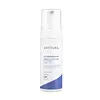What's inside
What's inside
 Key Ingredients
Key Ingredients

 Benefits
Benefits

 Concerns
Concerns

 Ingredients Side-by-side
Ingredients Side-by-side

Water
Skin ConditioningGlycerin
HumectantLauryl Glucoside
CleansingAcrylates Copolymer
Decyl Glucoside
CleansingDisodium Cocoamphodiacetate
CleansingPotassium Cocoyl Glycinate
Castanea Crenata Pellicle Extract
AntioxidantSodium Chloride
MaskingButylene Glycol
HumectantTromethamine
BufferingCastanea Crenata Shell Powder
AbrasivePotassium Chloride
1,2-Hexanediol
Skin ConditioningCoconut Acid
CleansingPotassium Cocoate
EmulsifyingPanthenol
Skin ConditioningAllantoin
Skin ConditioningCapryloyl Salicylic Acid
ExfoliatingDipotassium Glycyrrhizate
HumectantBoswellia Serrata Resin Extract
SmoothingDisodium EDTA
Hexylene Glycol
EmulsifyingGlyceryl Glucoside
HumectantEthylhexylglycerin
Skin ConditioningPropanediol
SolventHydrogenated Phosphatidylcholine
EmulsifyingCaprylic/Capric Triglyceride
MaskingCentella Asiatica Extract
CleansingSucrose Stearate
EmollientBenzyl Glycol
SolventHydrolyzed Glycosaminoglycans
HumectantSodium Hyaluronate
HumectantCetearyl Alcohol
EmollientSodium Hyaluronate Crosspolymer
HumectantHydrolyzed Hyaluronic Acid
HumectantHydroxypropyltrimonium Hyaluronate
Asiaticoside
AntioxidantMadecassic Acid
Skin ConditioningAsiatic Acid
Skin ConditioningMadecassoside
AntioxidantHyaluronic Acid
HumectantSodium Acetylated Hyaluronate
HumectantParfum
MaskingWater, Glycerin, Lauryl Glucoside, Acrylates Copolymer, Decyl Glucoside, Disodium Cocoamphodiacetate, Potassium Cocoyl Glycinate, Castanea Crenata Pellicle Extract, Sodium Chloride, Butylene Glycol, Tromethamine, Castanea Crenata Shell Powder, Potassium Chloride, 1,2-Hexanediol, Coconut Acid, Potassium Cocoate, Panthenol, Allantoin, Capryloyl Salicylic Acid, Dipotassium Glycyrrhizate, Boswellia Serrata Resin Extract, Disodium EDTA, Hexylene Glycol, Glyceryl Glucoside, Ethylhexylglycerin, Propanediol, Hydrogenated Phosphatidylcholine, Caprylic/Capric Triglyceride, Centella Asiatica Extract, Sucrose Stearate, Benzyl Glycol, Hydrolyzed Glycosaminoglycans, Sodium Hyaluronate, Cetearyl Alcohol, Sodium Hyaluronate Crosspolymer, Hydrolyzed Hyaluronic Acid, Hydroxypropyltrimonium Hyaluronate, Asiaticoside, Madecassic Acid, Asiatic Acid, Madecassoside, Hyaluronic Acid, Sodium Acetylated Hyaluronate, Parfum
Water
Skin ConditioningGlycerin
HumectantSorbitol
HumectantPropanediol
SolventCoco-Glucoside
CleansingCaprylyl/Capryl Glucoside
CleansingDisodium Cocoamphodiacetate
CleansingDisodium Cocoyl Glutamate
CleansingSodium Chloride
MaskingCitric Acid
BufferingGlyceryl Caprylate
EmollientDisodium EDTA
Ethylhexylglycerin
Skin ConditioningButylene Glycol
HumectantTocopherol
AntioxidantCamellia Sinensis Leaf Extract
Antimicrobial
 Reviews
Reviews

Ingredients Explained
These ingredients are found in both products.
Ingredients higher up in an ingredient list are typically present in a larger amount.
Butylene Glycol (or BG) is used within cosmetic products for a few different reasons:
Overall, Butylene Glycol is a safe and well-rounded ingredient that works well with other ingredients.
Though this ingredient works well with most skin types, some people with sensitive skin may experience a reaction such as allergic rashes, closed comedones, or itchiness.
Learn more about Butylene GlycolDisodium Cocoamphodiacetate is a surfactant and helps cleanse skin. It is created from the fatty acids of coconut oil.
Surfactants help rinse oil, dirt, and other pollutants easily from skin. It has a faint fruit-like scent.
Disodium EDTA plays a role in making products more stable by aiding other preservatives.
It is a chelating agent, meaning it neutralizes metal ions that may be found in a product.
Disodium EDTA is a salt of edetic acid and is found to be safe in cosmetic ingredients.
Learn more about Disodium EDTAEthylhexylglycerin (we can't pronounce this either) is commonly used as a preservative and skin softener. It is derived from glyceryl.
You might see Ethylhexylglycerin often paired with other preservatives such as phenoxyethanol. Ethylhexylglycerin has been found to increase the effectiveness of these other preservatives.
Glycerin is already naturally found in your skin. It helps moisturize and protect your skin.
A study from 2016 found glycerin to be more effective as a humectant than AHAs and hyaluronic acid.
As a humectant, it helps the skin stay hydrated by pulling moisture to your skin. The low molecular weight of glycerin allows it to pull moisture into the deeper layers of your skin.
Hydrated skin improves your skin barrier; Your skin barrier helps protect against irritants and bacteria.
Glycerin has also been found to have antimicrobial and antiviral properties. Due to these properties, glycerin is often used in wound and burn treatments.
In cosmetics, glycerin is usually derived from plants such as soybean or palm. However, it can also be sourced from animals, such as tallow or animal fat.
This ingredient is organic, colorless, odorless, and non-toxic.
Glycerin is the name for this ingredient in American English. British English uses Glycerol/Glycerine.
Learn more about GlycerinPropanediol is an all-star ingredient. It softens, hydrates, and smooths the skin.
It’s often used to:
Propanediol is not likely to cause sensitivity and considered safe to use. It is derived from corn or petroleum with a clear color and no scent.
Learn more about PropanediolChances are, you eat sodium chloride every day. Sodium Chloride is also known as table salt.
This ingredient has many purposes in skincare: thickener, emulsifier, and exfoliator.
You'll most likely find this ingredient in cleansers where it is used to create a gel-like texture. As an emulsifier, it also prevents ingredients from separating.
There is much debate on whether this ingredient is comedogenic. The short answer - comedogenic ratings don't tell the whole story. Learn more about comegodenic ratings here.
The concensus about this ingredient causing acne seems to be divided. Research is needed to understand if this ingredient does cause acne.
Scrubs may use salt as the primary exfoliating ingredient.
Learn more about Sodium ChlorideWater. It's the most common cosmetic ingredient of all. You'll usually see it at the top of ingredient lists, meaning that it makes up the largest part of the product.
So why is it so popular? Water most often acts as a solvent - this means that it helps dissolve other ingredients into the formulation.
You'll also recognize water as that liquid we all need to stay alive. If you see this, drink a glass of water. Stay hydrated!
Learn more about Water